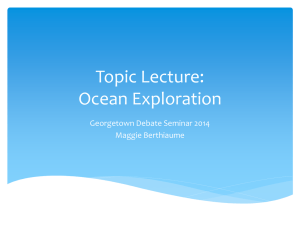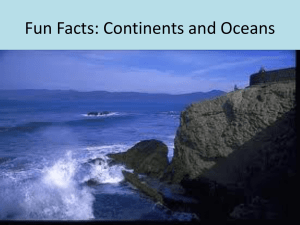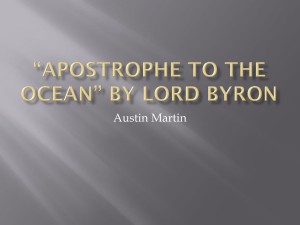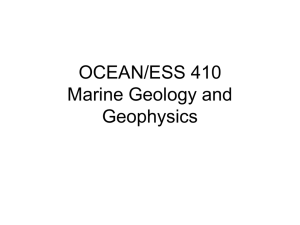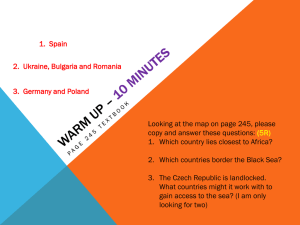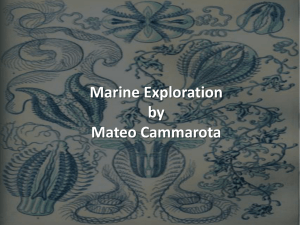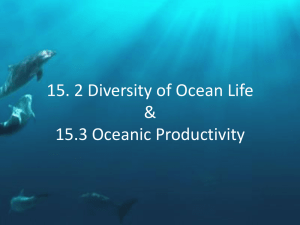Earth`s Oceans
advertisement
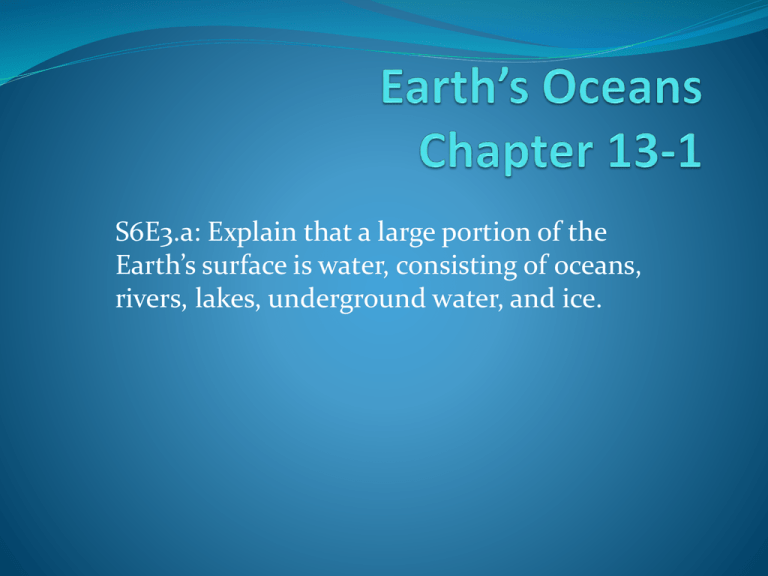
S6E3.a: Explain that a large portion of the Earth’s surface is water, consisting of oceans, rivers, lakes, underground water, and ice. I will be able to…… List the major divisions of the global ocean. 2. Describe the history of Earth’s ocean. 3. Identify the properties of ocean water. 4. Describe the interactions between the ocean and the atmosphere. 1. Homework Chp 13-1 p. 381 questions 2-10 2. The top layer of ocean water that extends to 300m below sea level is called ________. Surface zone Notes: Temperature of ocean water decreases as depth increases. Gradual change. Water in the ocean has 3 layers by temperature. Surface zone Warm, top layer Extends to 300 m below sea level Sunlight heats the top 100 m Surface currents mix the heated water with cooler water Thermocline Second layer Extend from 300 m to 700 m Temperature drops with increased depth faster than it does in the other zones Deep zone Bottom layer Extends from the base of second layer to the bottom Temperature range – 1°C to 3°C 3. Name the major divisions of the global ocean. Pacific, Atlantic, Indian, Arctic, Southern Oceans Largest Ocean – Pacific Smallest ocean – Arctic, its surface mainly covered in ice. 4. Explain how Earth’s first oceans formed. Sometime before 4 billion years ago, Earth cooled enough for water vapor to condense. This water began to fall as rain. The rain filled low-lying areas, and the first oceans began to form. 5. Why is the ocean an important part of the water cycle? nearly all of Earth’s water is found in the ocean 6. Between which two steps of the water cycle does the ocean fit? precipitation and evaporation in the water cycle 7. Describe how the ocean plays a role in stabilizing Earth’s weather conditions. ocean absorbs and stores energy from sunlight, helps to regulate temperatures in the atmosphere 8. List one factor that affects salinity in the ocean and one factor that affects ocean temperature. Explain. Evaporation affects salinity. When water evaporates from the ocean, dissolved solids are left behind. Temperature of ocean water decreases with depth. Temperature at the surface is much warmer than the average temperature of the ocean. (Using the image in your textbook on page 381) 9. At which stage would solid or liquid water fall to the Earth? precipitation 10. At which stage would the sun’s energy cause liquid to rise into the atmosphere as water vapor? evaporation Notes: Ocean water is salty! This salt is the same kind you sprinkle on your food. Sodium Chloride How do the salts get into the oceans? As rivers and streams flow toward the oceans, they dissolve various minerals on land. The running water carries these dissolved minerals to the ocean. Salinity Amount of dissolved solids in a given amount of liquid. Salinity is measured as grams (g) of dissolved solids per kilogram (kg) of water. 35 g of salt per 1 kg of water


